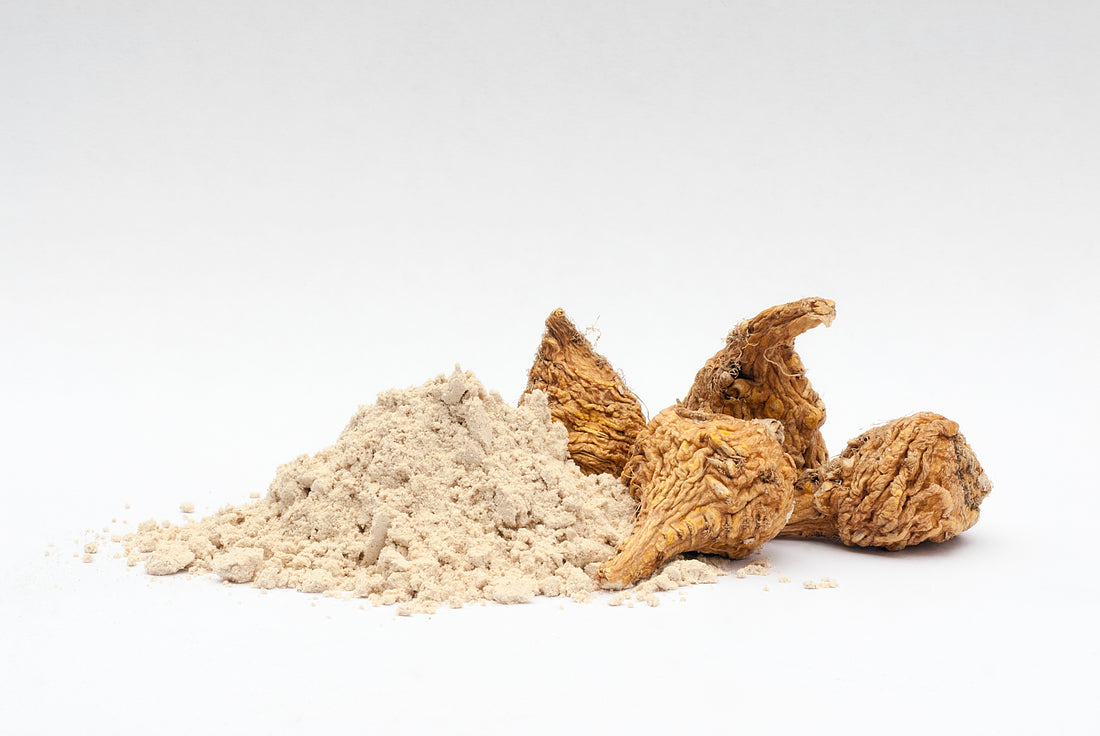Maca Root has such a fantastic story of how it was first discovered and harvested and how it has remained intact to be the supplement that it is today. Maca Root (Lepidium Meyenii) is an important vegetable in the mustard family. It is one of only a few crops that can be grown in some of the most inhospitable regions in the world. True Maca is grown high in the Andes Mountains at altitudes of up to 15,000 feet. It has been cultivated for over 3000 years as stable food for Inca people.
The plants' roots are bulbous; they are cultivated, dried (turn hard as stone) and can be stored for years before use. The dried roots can then be boiled, which softens them to be eaten. The juice is often consumed as a tonic, or the roots are turned into a powder form, the form you most often see them in today.
If you follow the legend of Maca Root, Inca warriors consumed it before going into battle for its energy and stamina. Maca was also used for its libido-enhancing effects and as a nutritiously-dense staple food for their diet. The plant became so well known for its enhancing benefits that Spanish Colonists in South America accepted it as a tax payment in place of gold. Hundreds of years later, the health benefits of Maca started to reach other countries, and in approximately 1843, a German Botanist began researching and documenting the health benefits of the plant. In roughly 1964, Maca was introduced to the world, but it did not gain acceptance until the 1990’s when natural healthcare providers and herbalists began to recommend it to their patients.
As time evolved, so too did the research and the health benefits of Maca which have given us the product you most recognize in health stores. Maca can be grown in other climates. However, "true" Maca is still cultivated in the Andes Mountains and should be the only Maca that you consume if you are looking for the nutrient-dense properties of the herb.
The Health Benefits of Maca
Maca grown in the Andes are nutrient-dense plants, often referred to as a "superfood" containing proteins, healthy fats and fibre. Maca also contains calcium and magnesium, and several other essential minerals. Maca Root is an adaptogen, which means it helps your body to adapt to mental and physical weaknesses.
Maca also has a tonic effect on the body's endocrine functions. Your endocrine system includes glands and hormones that control fertility, sexual function, digestion, nervous system, brain function and energy levels. It is used as an energy tonic, and a means to stabilize and reduce stress and anxiety. Maca may positively affect sex drive in men and women, increase semen volume and sperm count. The results of most studies included a dosage of 1500-3000 mg daily. Maca can help alleviate symptoms of Andropause, Menopause and PMS.
Maca supplements are found in powdered form or capsules, and in some cases, a concentrated liquid form. Look for products from Ultimate Maca. They are all made with 100% pure sundried and certified organic Maca Root that has been grown in the Andes Mountains, where it was first discovered. Ultimate Maca products use yellow Maca (may also appear white), which is more widely used in Peru for its energy and libido-enhancing properties. Ultimate Maca Black Liquid is a more powerful stamina-boosting aid. Evidence shows that it contains powerful neuroprotective qualities, improving memory and concentration. It may also help the immune system to fight infections and the common cold. Maca, referred to as Red Maca, is also valued for its high antioxidant content and is traditionally used for prostate health and to elevate mood.
There are no reported drug interactions with Maca, but if you have thyroid problems, you should use them with caution because it contains goitrogens, which may interfere with a compromised thyroid gland. Reliable data about this product's safety with pregnancy or breastfeeding is not yet available, so err on the side of caution and avoid. And if you have hormone-sensitive diseases such as breast cancer, uterine cancer, ovarian cancer, endometriosis, or uterine fibroids, Maca extracts may interfere negatively.
Resources
https://pubmed.ncbi.nlm.nih.gov/11753476/https://pubmed.ncbi.nlm.nih.gov/18801111/
https://pubmed.ncbi.nlm.nih.gov/12236688/
https://pubmed.ncbi.nlm.nih.gov/27621241/
https://pubmed.ncbi.nlm.nih.gov/18784609/
https://pubmed.ncbi.nlm.nih.gov/19260845/
https://www.ncbi.nlm.nih.gov/pmc/articles/PMC3184420/
https://pubmed.ncbi.nlm.nih.gov/12472620/
https://pubmed.ncbi.nlm.nih.gov/12472620/
https://www.ncbi.nlm.nih.gov/pmc/articles/PMC3614644/
https://www.ncbi.nlm.nih.gov/pmc/articles/PMC4411442/
https://www.ncbi.nlm.nih.gov/pmc/articles/PMC2928177/
https://pubmed.ncbi.nlm.nih.gov/21840656/



